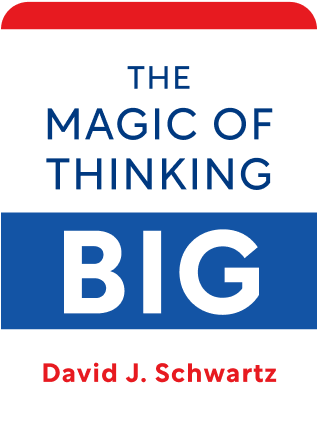

This article is an excerpt from the Shortform book guide to "The Magic of Thinking Big" by David J. Schwartz. Shortform has the world's best summaries and analyses of books you should be reading.
Like this article? Sign up for a free trial here .
Is creativity more of an inherent character trait or a skill that can be developed through practice? Do you think anyone can become a creative thinker?
Whether creativity is more of an inborn trait and a trainable skill has always been a debatable topic. That being said, anyone can become a creative thinker if they adopt the right mindset.
Here are six ways to cultivate creative thinking, according to David J. Schwartz.
6 Ways to Develop Creative Thinking
Creative thinking is about finding innovative solutions to problems, employing new and improved ways to do something.
Too often people associate creative thinkers with something major, such as writing a novel or inventing some new world-changing device. But give yourself more credit. Anytime you figure out a way to make something better, you are creatively thinking. Stopping an argument before it starts, finding a new way to save money, or streamlining a business task are all examples of creative thinking.
In his book The Magic of Thinking Big, author David J. Schwartz outlines six ways to develop creative thinking.
- Believe it’s possible. Never think something is “impossible.”
- Stop traditional thinking. Be experimental.
- Ask yourself, what can I improve today? Keep getting better.
- Ask yourself, how can I do more? Increase your capacity.
- Ask and listen. Don’t talk too much.
- Stretch your mind. Get stimulated.
1) Believe It’s Possible
If you think something can’t be done — liking a person, solving a work problem, creating world peace — your mind goes to work for you, bolstering your arguments and beliefs that this problem is impossible. Your brain shuts down thoughts of a possible solution.
If you truly believe something can be done, your mind also goes to work for you — only this time it finds ways to help you prove a solution is possible. Belief releases creative powers, enabling constructive thinking and bringing inspiration. You find ways to like the annoying coworker, fix the sales problem, or send your child to college.
Here are two tips to help you develop creative power through belief:
- Get rid of words and phrases such as “impossible,” “can’t do that,” and “no way.” These negative words set your mind in motion to create more negative thoughts.
- Think of something you want to do but always felt like you couldn’t. Write down a list of reasons why you can do it.
2) Stop Traditional Thinking
Traditional thinking is the belief that there is one, proven way to get something done, and that’s that. When you think like this, nothing gets innovated because you do the same thing over and over again.
Here’s a test – see what your reaction is to the following ideas:
- School should start at 10AM, not at 8AM.
- Companies should have a 4-day workweek.
- Presidents should have 5 year terms, instead of 4.
Did you have an instinctively negative reaction? Something like, “no, this is not the way things have been. We shouldn’t change things.” This is a sign of traditional thinking. With this reaction, you constrain your mind, and you don’t give anything permission to change.
Instead, an untraditional thinker person would react by saying, “huh, that’s an interesting idea. Why do you think this?”
When you take on the philosophy that there is no one best way to do anything, you signal your mind to unleash creative thinking and find ways to innovate. There are three ways to fight traditional thinking:
- Welcome new ideas. Be receptive to new thoughts, even ones you might disagree with at first.
- Experiment. Break up your routine with new restaurants, driving routes, books, and people. Expose yourself to new environments and ideas.
- Be progressive. Acknowledge that things change. Just because you did something a certain way in a previous job doesn’t mean that’s how you should do it in your new career.
3) “What Can I Improve Today?” Keep Getting Better
What if Ford Motor Company announced that it had just made the best car ever? “No better car will ever be possible. There is no more need for research, engineering, planning or designing.” With that attitude, the company would shrivel and die.
True success means continuous innovation. It’s true of companies, and it’s true of you as a person.
Successful people always ask themselves, “How can I do better?” Note that it’s not, “Can I do better?” They know they can always do better, it’s just a matter of how.
Seek continuous improvements, in every domain that matters:
- How can I encourage my coworkers today?
- How can I be a better spouse?
- How can I be a better parent?
- How can I be more efficient at what I do?
When you ask yourself how you can do better, you find the opportunities to improve. Set daily, weekly improvement plans for yourself.
4) How Can I Do More? Increase Your Capacity
We all sometimes feel like we already have too much on our plates; adding more would be impossible. But don’t let your “busyness” to close yourself off to new opportunities and responsibilities.
Your capacity is far greater than it seems. You have as much capacity as you think you do. When you believe you can do more, you will find ways to do it. If something is important enough to you, you will find ways to make the time and get more efficient.
- A young mom had a husband who was injured in a car accident. Suddenly she found it necessary to work full time, along with taking care of her children and home. She didn’t think it was possible, but she had to make it work.
- To her delight, she found herself increasing her efficiency, letting her kids take on more responsibility, and managing it all quite well. These were all solutions that didn’t appear until she committed to doing more.
If your employer needs to find someone who can take on responsibilities, resist saying, “no, I can’t take it on right now.” They’ll find someone else who wants to advance their career. By default, accept additional responsibilities to do more, and be confident you can handle it.
Recall the adage, “if you want something done, ask a busy person.” Busy people are often successful people who accept opportunities to do even more, then figure out creative solutions to make it happen.
5) Ask and Listen
Listening is a topic that pops up a few times in The Magic of Thinking Big, underscoring its importance as a trait of successful people.
Small people monopolize the conversation and want to be talking all the time. But they become a one-way outflow of information, never receiving it.
Big people listen intently. Listening to other people’s ideas sparks your own creative ideas.
- Successful people request advice much more than they give it. They want to make the best decisions possible, so they gather all the evidence and opinions available to end up with the best possible decision.
- Large, successful companies spend a ton of effort and money on consumer research before launching new products. By listening and acting upon the ideas of others, they can roll out the most satisfying product possible.
To strengthen your creativity through listening, there are three tips:
- Draw others out and encourage them to talk. Ask questions. “What do you think should be done about …?” “What do you think is the most important point here?” Not only does your mind benefit from the raw creative power of others, but you gain the trust and camaraderie of people you’re dealing with. Everyone likes being asked their opinion.
- Offer your own views in the form of questions, not statements. Try “What do you think of trying this?” instead of, “We’ll be trying my new method.” You’ll get a more honest appraisal of the idea, rather than a defensive reaction.
- Concentrate on what the other person is saying, not on your next sentence. Listening is more than letting someone else talk. It’s absorbing and evaluating what she’s saying to get the full benefit of her ideas.
6) Stretch Your Mind
If you’re in the same environment in the same people doing the same things, you’re less likely to encounter new ideas.
To offset this, you must consciously seek out mental stimulation. When exposed to novel information, your brain will spark new ideas. Explore new budding areas of interest, or find new sources of information for your profession. Suggestions on what to do:
- Attend seminars, workshops, and classes.
- Find professional groups in your area of interest. Engage with new people.
- Find hobby organizations outside your profession.
- (Shortform examples: Today we also have podcasts, lectures on YouTube — and Shortform!)
Successful people understand that the most rewarding investment is in themselves, and the best time to start investing is now. Invest in your education. Real education is anything that improves your thinking.
If you feel you can’t afford something thought-provoking like a newspaper subscription, ask yourself – can you afford not to?
Manage Your New Ideas
All these creative-thinking tools we’ve been discussing are designed to spur new ideas. But after you generate ideas, you need to harvest and develop them. Three tips:
- Write down your ideas. The author suggests carrying around a notebook. (Our modern world also offers the convenience of smartphone apps and voice recording devices where we can easily deposit an idea before it’s lost.)
- Build a file (or document/spreadsheet) collecting your ideas and periodically review them. If you deem some to have no value, get rid of them. But keep the ones with promise.
- Nurture your idea. Research and ponder ways to make your idea a reality. Investigate all angles, and put your idea to work when the time is right.

———End of Preview———
Like what you just read? Read the rest of the world's best book summary and analysis of David J. Schwartz's "The Magic of Thinking Big" at Shortform .
Here's what you'll find in our full The Magic of Thinking Big summary :
- The strategies and techniques that successful people use
- How to find victory in every setback
- How to think creatively and come up with innovative solutions






